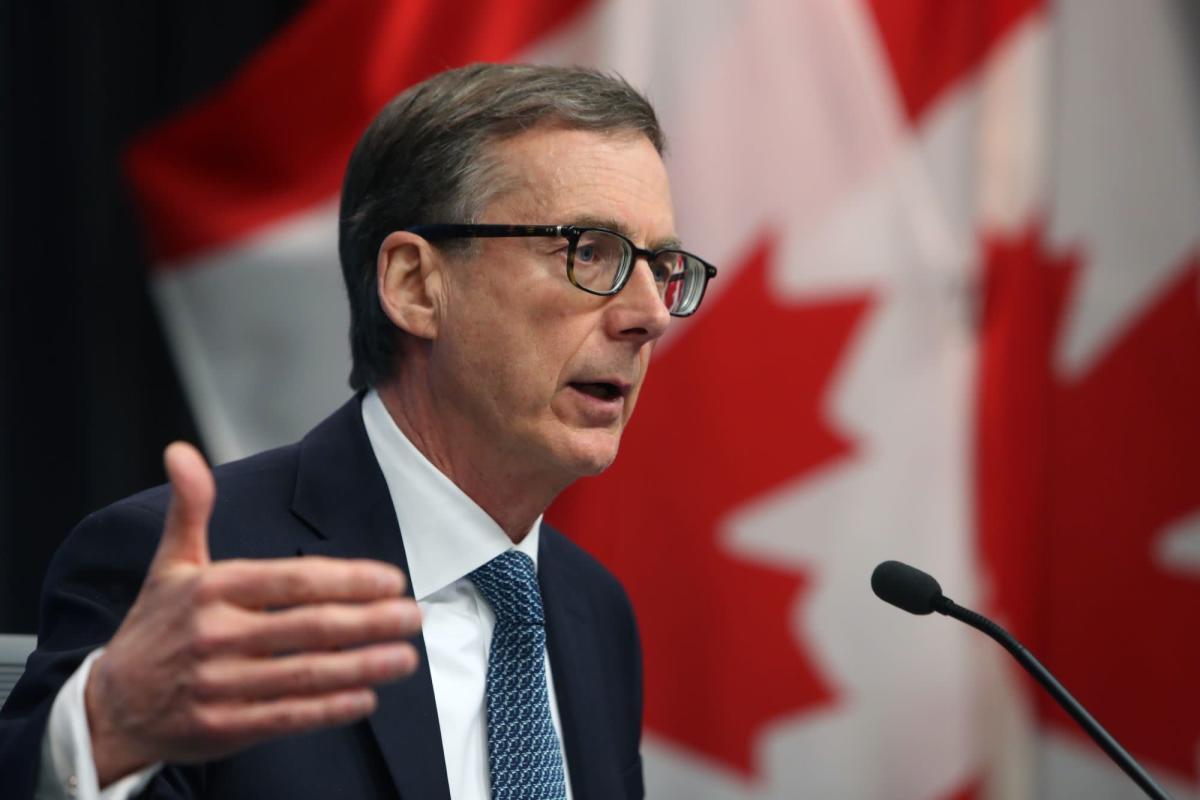
(Bloomberg) — The Bank of Canada raised its interest rate by half a percentage point in its biggest hike in more than two decades, and said it would stop buying government bonds to shrink its balance sheet as it moves aggressively to wrestle inflation down from a three-decade high.
Policy makers led by Governor Tiff Macklem increased the central bank’s overnight benchmark to 1% at a policy decision on Wednesday, and said that interest rates “will need to rise further” as price pressures persist well above target. The bank also said it would stop replacing its holdings of maturing government bonds on April 25, a process known as quantitative tightening.
Short-term bonds fell, pushing Canada’s benchmark two-year yield to 2.332% as of 10:16 a.m. Ottawa time, about 3 basis points higher than immediately before the decision. The loonie strengthened slightly to C$1.2639 per U.S. dollar.
The policy actions mark an acceleration of what’s expected to be one of the most forceful tightening campaigns ever by the Bank of Canada, a tacit recognition from the central bank that it needs to quickly exit from ultra-loose monetary policy before inflation becomes sticky amid strong demand.
“There is an increasing risk that expectations of elevated inflation could become entrenched,” the central bank said in its rate statement, adding it will “use its monetary tools to return inflation to target and keep inflation expectations well-anchored.”
In what officials described as a “substantial upward revision,” inflation is now seen averaging near 6% in the first half of 2022, before easing to about 2.5% in the second half of next year and to near its 2% target by the end of 2024.
Inflation is projected to average 5.3% in 2022, versus forecasts in January of 4.2%. Price growth will slow to 2.8% on average in 2023, versus previous forecasts of 2.3%.
Shrinking Balance Sheet
Wednesday’s 50 basis point hike was anticipated by 25 of 30 economists surveyed by Bloomberg News, with markets pricing in about a 70% chance of a half-point increase. Investors have been betting the central bank will continue hiking borrowing costs in coming months until the key lending rate rises to near 3% by this time next year. The Bank of Canada began its hiking cycle last month, raising the policy rate to 0.5% from the emergency low of 0.25%.
The central bank is also providing some details of its quantitative tightening plan on Wednesday, with the bank no longer planning to replace federal bonds as they roll off their balance sheet starting later in April. Over the next 12 months, about a quarter of the net C$350 billion ($275 billion) in government debt acquired during the pandemic will mature, pushing up yields, and complementing the increase in the policy rate.
Despite the hawkish policy statement, there are some relatively optimistic assumptions weaved throughout the decision. For one, supply is seen jumping next year to meet strong demand as Covid-19 containment measures are lifted and global supply disruptions ease.
Ukraine Crisis
Officials are also assuming Canada’s economy won’t be negatively impacted by the Ukraine crisis thanks to the nation’s commodities sector, while global inflationary pressures are seen eventually abating. If these assumptions fail to materialize, the rate-hike path would need to be more aggressive.
The central bank also raised its estimates of how quickly the economy can grow without fueling inflation and forecast a temporary supply jump of 3.3% in 2023, well above its long-term potential. That assumption gives the central bank more scope to raise interest rates more slowly.
On the other hand, the central bank also raises its estimate for its neutral rate to around 2.5% from 2.25%, which technically gives it more scope to hike.
The jumbo rate hike is the first by a Group of Seven central bank since the pandemic, but not the first on Wednesday. New Zealand’s central bank lifted its official cash rate by half a percentage point to 1.5% earlier in the day. A hawkish pivot is also expected in the U.S., where Chairman Jerome Powell and other policy makers have put a half-point hike on the table for the Federal Reserve’s meeting in May.
©2022 Bloomberg L.P.